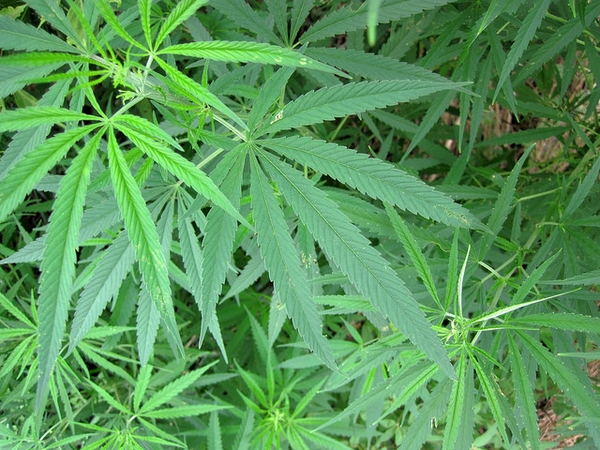Primordial plants like Cannabis sativa and psychedelic mushrooms are making a “comeback” as humanity pursues the offerings of Mother Nature for longer, better, more educated, cultured, and peaceful qualities of life. The fact that these plants transcend time and, yet, divergently, are very new to modern society creates an aura of mysteriousness. How could we have had the time to know so much about these philanthropic botanicals, and yet, just be scratching the surface?
As science catches up to knowledge that could’ve been learned years ago, one’s personal, experiential education can demonstrate how plants may facilitate our quests for fulfilling lives. In some recesses of the Earth, the relationship with plants never diminished.
I had the wonderful opportunity to speak with Robert C. Clarke, an esteemed student of cannabis and respected ethnobotanist. An ethnobotanist studies the relationships between plants and peoples, and Clarke’s own interests encompass the Cannabis plant as a multifaceted and valuable source of fiber, food, and drugs to human cultures worldwide for millennia.
We began in a time and place where the War on Drugs proliferated…
Pre-Reagan Years and the Height of the War on Drugs
Despite this omnipresent value, cannabis was essentially discarded during an 80+ year power trip that’s prevented global recognition of the plant’s maximum benefits. The culmination of the Marijuana Tax Act, the War on Drugs, and Schedule I classification drove anyone who valued the plant to subterranean whispers. I was curious how Clarke first became familiar with cannabis when it was outlawed in stigma?
“As with many people, my interest in cannabis began when we met in college,” he recalled. “I attended the University of California’s Santa Cruz campus, submitted The Botany and Ecology of Cannabis as my undergraduate research dissertation, and self-published it in 1977. This is when my career as a Cannabis researcher and writer began.
“Throughout my life, the Cannabis plant has proven to be a continual source of academic stimulation,” Clarke continued. “No other plant is used by so many peoples for such diverse purposes as edible seed, resilient fiber, and effective medicines that have been valued by humans for ages, assisting in our cultural, economic, and spiritual evolution.”
Clarke published Marijuana Botany in the early days of the Reagan Years, continuing his brazen venture into the underground cannabis culture during the height of the War on Drugs.
“I’ve always found solace in science,” Clarke explained. “Marijuana Botany played an unforeseen role in spreading plant science to the public and, by now, more than a million copies are in circulation. By the time of its publication in 1982, I was disappointed by my fellow Americans electing Ronald Reagan as our leader, a watershed moment marking the beginning of the end for the America that I envisioned.”
By the end of Reagan’s reign, Clarke moved to the Netherlands where there was greater tolerance for cannabis. “It was possible for me to both love America and leave it. I have never looked back, and I will always remain a patriotic citizen.”
This relocation provided a catalyst for Clarke to delve deeper and explore the wider world in pursuit of knowledge.
“The unintended outcome of international cannabis prohibition was the formation of a diffuse, yet cohesive underground counterculture united in their love of the plant and the common cause of evading prohibition’s consequences,” Clarke explained. “Growers, even though cautious and isolated, advanced the breeding of Cannabis varieties in an early manifestation of what we now call ‘crowd sourcing’ and ‘networking.’”
And Clarke pointed to the Internet for catalyzing ever-broadening channels of communication that help us understand what cannabis is and is not, such that the War on Drugs has become increasingly delinquent.
Cannabis Genetics
One need only explore a selection of different cultivars to witness diversity within the plants on a chemical level. The Cannabis gene pool is also diverse. But despite the sensory explosion from things like purples or funks or differently colored pistils, Clarke points to “prohibition pressures and market forces” as being deleterious to that genetic diversity.
“Most of the approved low-THC [tetrahydrocannabinol] hemp fiber cultivars were bred from genetically closely related parents, as were the hemp seed cultivars,” he explained. “High-THC and high-CBD [cannabidiol] cultivars originate from a wider geographical range and are more genetically diverse. But many of their foundational landraces are now extinct.”
Biotechnology Versus Mother Nature
Some researchers claim that harvesting cannabinoids from genetically modified yeasts or bacteria is more productive, or at least, can be more productive, especially regarding minor cannabinoid yields. Other researchers propose genetic editing for creating modified Cannabis varieties that produce elevated concentrations of these minor cannabinoids. I was curious as to how Clarke would go about creating Cannabis plants with high minor cannabinoid profiles.
“The Cannabis plant is an amazing producer of secondary metabolites such as cannabinoids and terpenes,” he answered. “Few other plants produce flowers or fruits with 20 to 30% dry weight of any target compound. I doubt that laboratory production of cannabinoids can become more economically efficient than breeding improved Cannabis cultivars and growing them in typical broad-acre production.
“Should a minor cannabinoid be proven highly effective for a particular use,” he continued, “and it cannot be harvested in enough volume to satisfy market demand, then possibly it will be produced by laboratory microorganisms or chemical synthesis.”
Clarke said that if he was tasked with producing plants containing elevated minor cannabinoid levels, he’d procure a diverse germplasm (living tissue that can be used to grow new plants), analyze the offspring for unique chemotypes, and utilize modern breeding techniques to increase the frequency and expression of favorable alleles (a variant form of a gene).
Terpenes
Terpenes differentiate cannabis cultivars and are becoming household regarding their medical potential. While cannabinoids produce the core effects of cannabis use, terpenes can regulate these effects, enhancing some (ensemble effect) while attenuating others.
“Terpenes make the cannabis experience more complex and colorful,” Clarke added. “Cannabis breeders often select plants for certain effects, and these are typically associated with characteristic aromas, which are also important in branding Cannabis cultivars.”
Breeder’s Best
Breeder’s Best is an entity created by CEO Dale Hunt, Ph.D., that seeks to bridge gaps between Cannabis breeders and the marketplace.
“Dale has assembled a highly skilled team well-versed in many specialized aspects working synergistically to grow our company,” Clarke discussed. “Based on our years of experience with many aspects of the cannabis industry, Mojave Richmond and I provide direction to Breeder’s Best via our international consulting company BioAgronomics Group.”
Breeder’s Best searches for medicinally effective cultivars based primarily on cannabinoid and terpene contents, and they require breeders to supply a certificate of analysis. The company helps breeders protect their intellectual property rights through patent protection of novel genetics.
“Once a variety is protected,” Clarke added, “it can be licensed to growers and a transparent stream of production can be established that benefits everyone along the supply chain. Breeder’s Best can also assist licensed growers and processors to find a market for their products.”
The Future
Clarke has spent decades learning about and teaching others about cannabis. Seeing through eyes educated from that vast knowledge base, Clarke conferred his optimism for cannabis breeding in the future.
“Largely because of prohibition, amateur Western drug Cannabis breeders have favored traits such as higher potency (THC content), shorter crop cycles (fast maturation), and market appeal (dense purple buds),” Clarke explained. “This narrow focus was often at the expense of other important agronomic characteristics such as plant structure and pest and disease resistance.
“Now that prohibition is waning, more skilled professionals are entering the field and we should see many modern cultivars bred for specialized uses from food and fiber to medicinal applications. There is still considerable diversity remaining for breeders to work with!”








